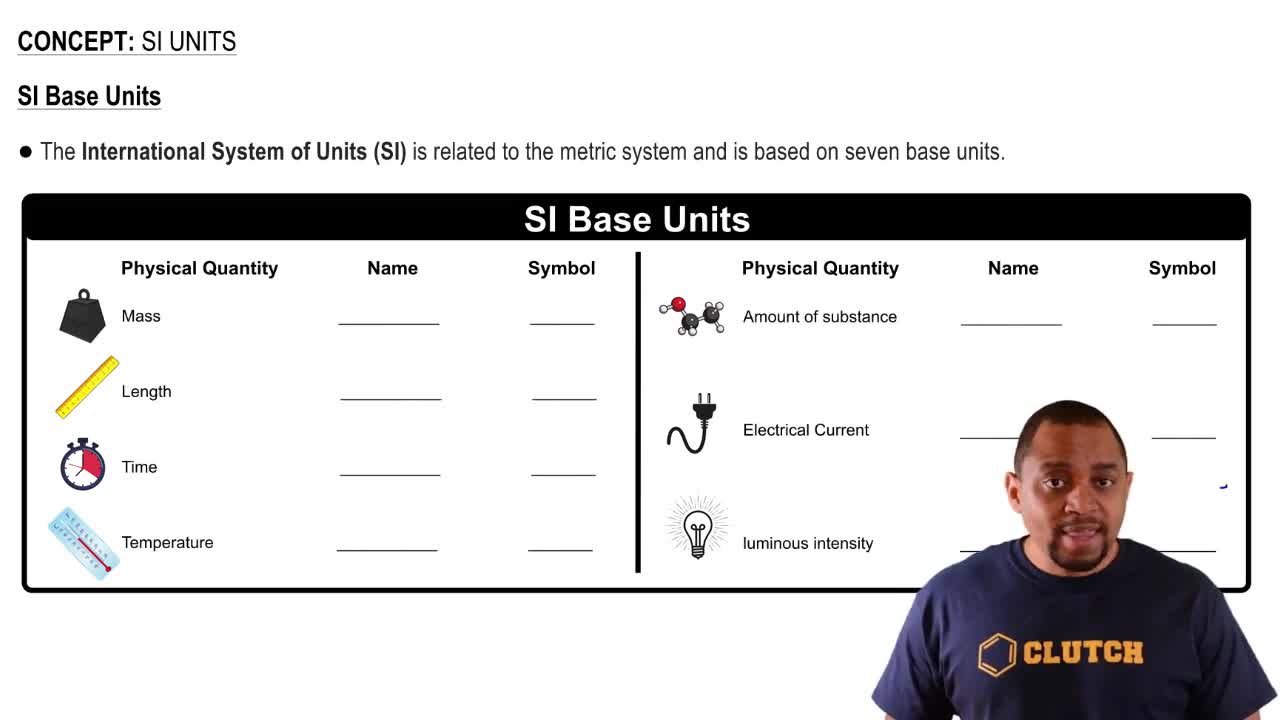Two solid objects, A and B, are placed in boiling water and allowed to come to the temperature of the water. Each is then lifted out and placed in separate beakers containing 1000 g of water at 10.0 °C. Object A increases the water temperature by 3.50 °C; B increases the water temperature by 2.60 °C. (b) What can you say about the specific heats of A and B?
Ch.5 - Thermochemistry
Chapter 5, Problem 51d
(d) How many kJ of heat are needed to raise the temperature of 5.00 kg of liquid water from 24.6 to 46.2 °C?
 Verified step by step guidance
Verified step by step guidance1
Identify the formula to calculate the heat required: \( q = m \cdot c \cdot \Delta T \), where \( q \) is the heat energy, \( m \) is the mass, \( c \) is the specific heat capacity, and \( \Delta T \) is the change in temperature.
Determine the mass \( m \) of the water, which is given as 5.00 kg.
Use the specific heat capacity \( c \) of liquid water, which is typically \( 4.18 \text{ J/g°C} \). Convert this to \( \text{kJ/kg°C} \) if necessary.
Calculate the change in temperature \( \Delta T \) by subtracting the initial temperature from the final temperature: \( \Delta T = 46.2°C - 24.6°C \).
Substitute the values into the formula to find \( q \): \( q = 5.00 \text{ kg} \times 4.18 \text{ kJ/kg°C} \times \Delta T \).

Verified video answer for a similar problem:
This video solution was recommended by our tutors as helpful for the problem above.
Video duration:
1mWas this helpful?
Key Concepts
Here are the essential concepts you must grasp in order to answer the question correctly.
Specific Heat Capacity
Specific heat capacity is the amount of heat required to raise the temperature of one gram of a substance by one degree Celsius. For water, this value is approximately 4.18 J/g°C. Understanding this concept is crucial for calculating the heat energy needed for temperature changes in substances.
Recommended video:
Guided course

Heat Capacity
Heat Transfer Equation
The heat transfer equation, often expressed as q = mcΔT, relates the heat energy (q) absorbed or released by a substance to its mass (m), specific heat capacity (c), and the change in temperature (ΔT). This equation is fundamental for solving problems involving temperature changes in materials.
Recommended video:
Guided course

Heat Capacity
Units of Energy
Energy is commonly measured in joules (J) or kilojoules (kJ), where 1 kJ equals 1000 J. In thermodynamics, it is important to be consistent with units when performing calculations, especially when converting between different energy units to ensure accurate results.
Recommended video:
Guided course

SI Units
Related Practice
Textbook Question
Textbook Question
(a) What amount of heat (in joules) is required to raise the temperature of 1 g of water by 1 kelvin? (b) What amount of heat (in joules) is required to raise the temperature of 1 mole of water by 1 kelvin?
Textbook Question
(c) What is the heat capacity of 185 g of liquid water?
1
views
Textbook Question
(b) Calculate the energy needed for this temperature change.
Textbook Question
The specific heat of octane, C8H18(l), is 2.22 J•g/K. (a) How many J of heat are needed to raise the temperature of 80.0 g of octane from 10.0 to 25.0 °C?
Textbook Question
The specific heat of octane, C8H18(l), is 2.22 J•g/K. (b) Which will require more heat, increasing the temperature of 1 mol of C8H18(l), by a certain amount or increasing the temperature of 1 mol of H2O(l) by the same amount?
